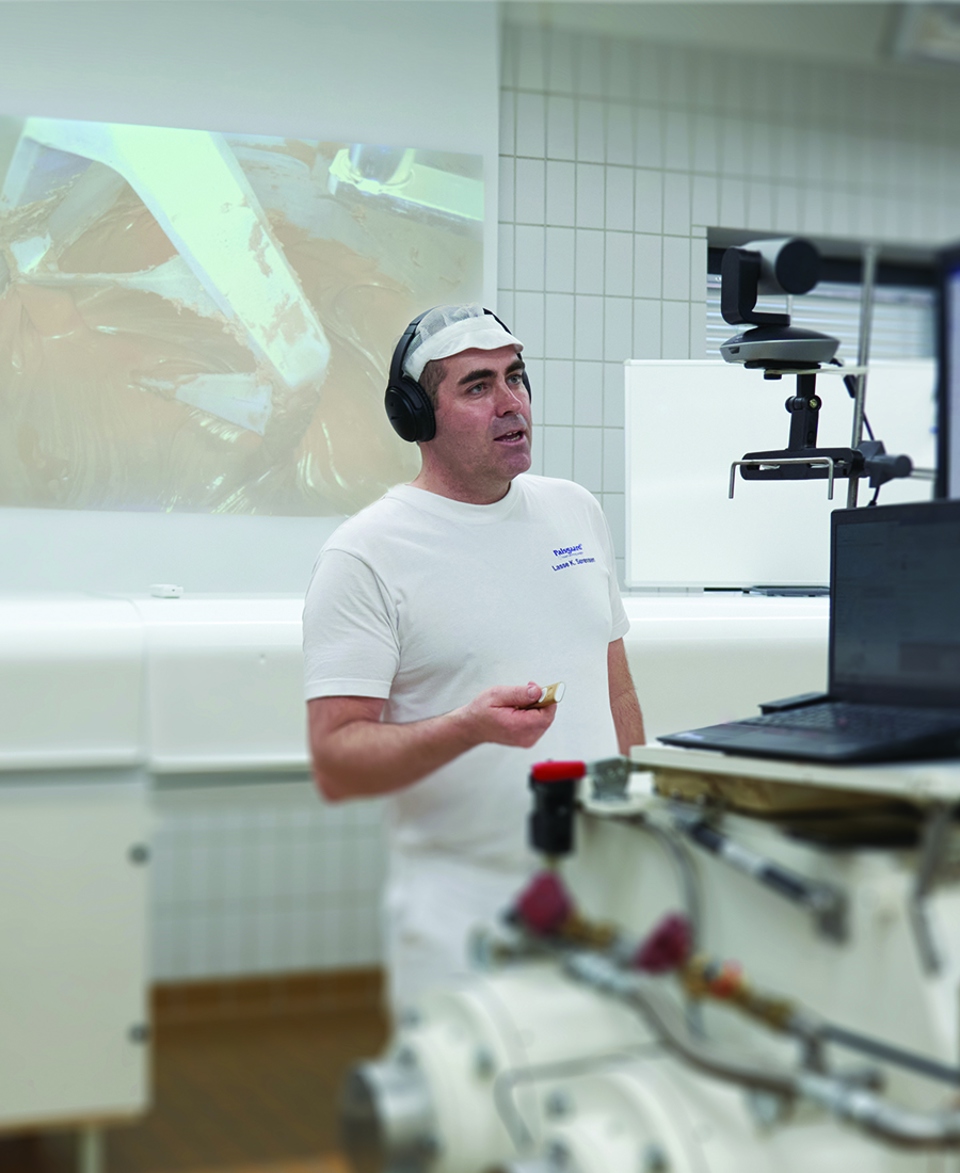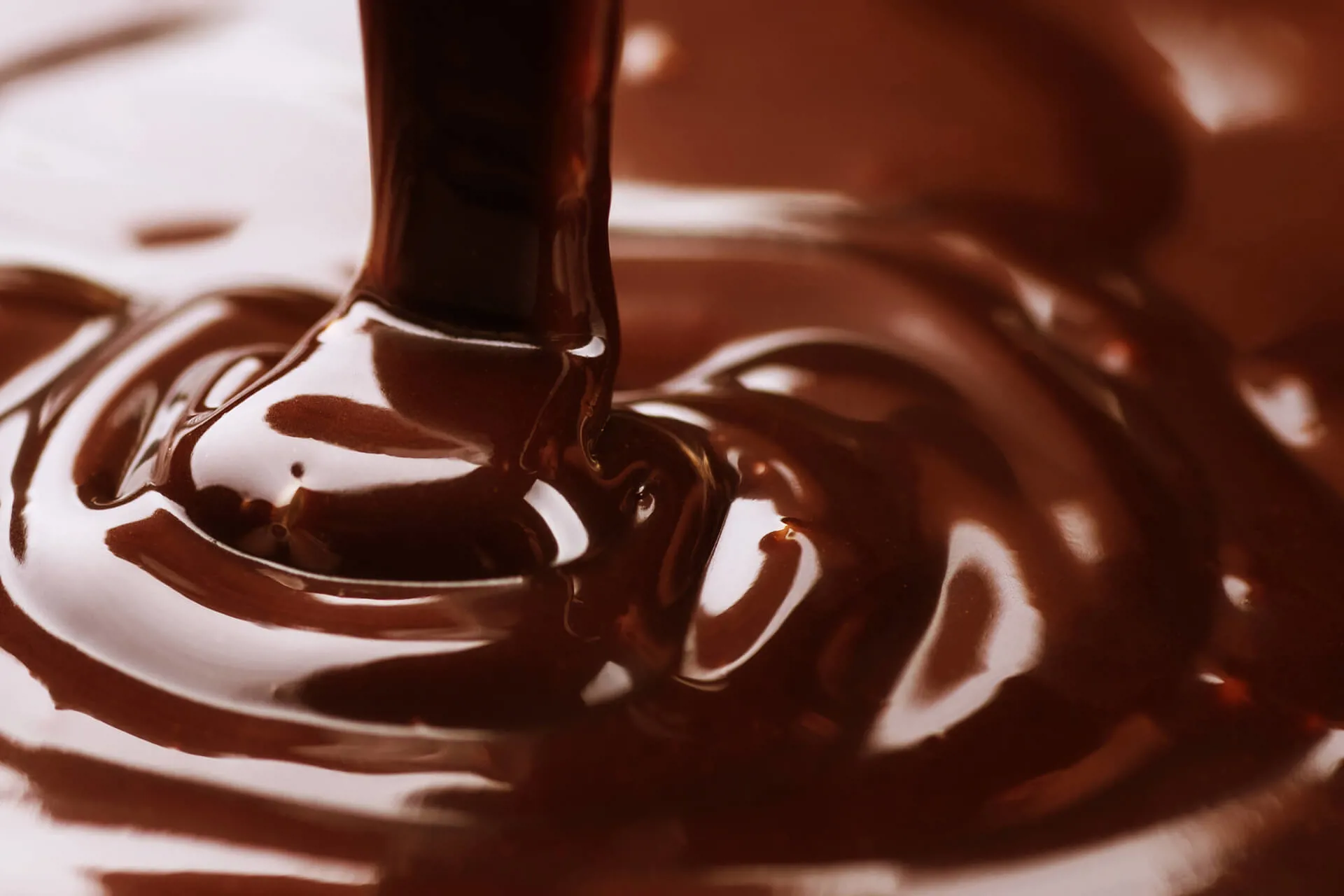
TECHNICAL ARTICLE
FEATURE ARTICLE
Chocolate manufacturers sometimes can’t believe the massive quality and cost benefits they get when they switch from lecithin to AMP. Lasse Kolding Sørensen, Senior Application Specialist at Palsgaard, wants to convince them:
"Of course, being able to cut prices can be a selling point, but we don’t actually go in saying ‘next month you could be saving €1million’, even though that’s actually true for some companies. Instead, we show them, for example, the difference between white chocolate products made with AMP and those made with lecithin, which aren’t actually white but more greyish in colour. Quality is a better door opener for us."

“In some ways, making chocolate is very easy”, Lasse says. “You can solve a lot of the problems in your production just by adding cocoa butter. But cocoa butter is expensive, and the more you add, the higher the cost.”
First used almost 100 years ago, lecithin remains a common solution to this challenge. “In the 1930s people realised that lecithin offers great performance when it comes to reducing viscosity in chocolate. And that allowed them to cut out a lot of the cocoa butter,” he continues.
But there are disadvantages too. “Lecithin also brings you some off-flavours and a dark colour. That can be a problem, particularly in white chocolate.”
AMP (ammonium phosphatide – E442) was invented in the 1960s as an alternative to lecithin with better organoleptic properties. Like lecithin, it is a phospholipid, but it is tailor-made for chocolate and taste- and colour-neutral.
Palsgaard has spent years perfecting AMP, culminating in sunflower-based Palsgaard® AMP 4455 and its rapeseed-based twin, Palsgaard® AMP 4458, which Lasse believes are the best products of their kind on the market. “Around here, they're sometimes known as ‘Super-AMP’!’”, he says. “They're so much better than anything else available.”
Suitable for all chocolate applications, AMP offers a range of organoleptic and functional benefits over lecithin. The most dramatic of these is its efficiency when it comes to reducing cocoa butter. While lecithin delivers cocoa butter savings of 4% at a 0.4% dosage, Palsgaard® AMP 4455 and Palsgaard® AMP 4458 allow an additional reduction of 2%. For a manufacturer producing 10,000 MT of chocolate per year, that translates to annual cost savings of €700,000.
Lasse says such figures are so high they can be hard for manufacturers to comprehend. “They’re thinking ‘Can it be true?’ It’s like they’re getting free cocoa butter. And it’s an even bigger surprise when they start doing all the calculations.”
Getting more out of their cocoa beans means manufacturers can produce much higher volumes of chocolate. And with environmental concerns becoming more important to producers and consumers alike, using less cocoa butter also makes sense from a sustainability perspective.
Since 2010, more than 6000 chocolate products containing AMP have been launched. But Lasse believes these figures should be much higher, and that more manufacturers should be moving away from lecithin: “A hundred years is a long time, especially when a better, ‘made for chocolate', solution is available,” he says. “It’s time to give up traditions and old-school methods.”
Now he’s adopting new strategies to make the case, including emphasising the quality gains AMP can bring: “Of course being able to cut price can be a selling point, but we don’t actually go in saying ‘next month you could be saving €1million’, even though that’s actually true for some companies. Instead, we show them, for example, the difference between white chocolate products made with AMP and those made with lecithin, which aren’t actually white but more greyish in colour. Quality is a better door opener for us.”
Lasse has found that the combination of quality and cost benefits offered by AMP is usually very persuasive: “If you say to a CEO: ‘You can save on cocoa butter by 2%, you can get rid of the off-flavour and you can get a cleaner product,’ what do they say? Eight times out of ten, they say ‘Ok!’”
Something else that can change minds is the level of support Lasse and his team provides. Switching from lecithin to AMP can involve significant implementation work, but Palsgaard has plenty of experience in walking customers through it.
“The big difference with us is the quality of service and technical support we provide,” he says. “We work closely with our customers, and when they’re getting all that information from a company they trust, they’re open to us running trials. In the end, it’s not such a huge amount of work for them, because we can guide them.”
Lasse advises customers on recipe adjustments and can help solve technical problems relating to flow properties, offering expertise, for example, on measurement techniques: “Some companies measure their chocolate at a low speed, but use it at a high speed, which can make it behave very differently. Chocolate isn’t like milk or water, where the viscosity is always the same and doesn’t depend on shear rate,” Lasse explains. “We know how to measure the functionality of chocolate accurately and relate it to the requested flow properties in the production. That also enables us to provide certificates with our products showing exactly how they reduce viscosity.”

Pre-COVID, Lasse would often visit customers who were experiencing technical difficulties.
To continue to provide the same quality of service in the “new normal”, he has set up what he calls an “online chocolate lab”. “We’ve got screens, cameras, and whiteboards everywhere,” he explains. “For all our equipment, we can share what’s going on a projector. That means we can run parallel trials with customers – they’re doing the same thing we are but on a much bigger scale. So it’s like we’re there, even though we can’t be there!”
The set-up also allows his team to run online seminars from the lab, something he hopes will continue long into the future. “Obviously a lot of terrible things have come from coronavirus, but some good things have too. At first, we thought there was no way chocolate could be made in one place and copied exactly in another. Now we know we can do it very easily by camera. And it’s something we’ll carry on doing, even when countries start opening up more. Things have changed forever.”
Like his customers, Lasse says he’s always learning. “I’m very curious about everything. I’ve been in the food industry for 25 years, but every day there’s something I don’t understand that I might learn the next day. I’m constantly discovering more about the way AMP works and about how we can communicate its benefits.”


TECHNICAL ARTICLE

TECHNICAL ARTICLE

TECHNICAL ARTICLE

TECHNICAL ARTICLE